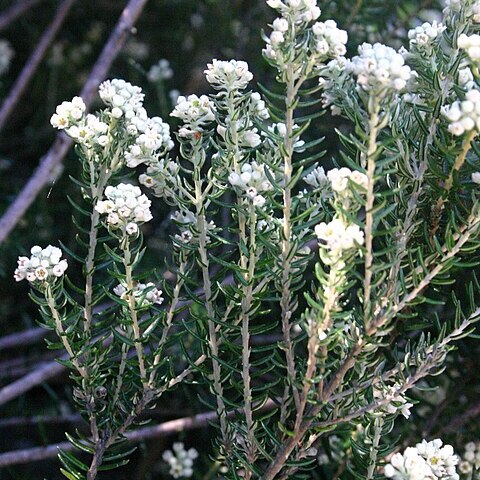Grey-tomentose shrub or small tree, 1.5-3.0(-6.0) m high. Leaves lanceolate to ovate, mostly 10-15 mm long, base rounded or subcordate, apex acute, margins revolute, canescent beneath. Inflorescences spicate, forming compound panicles. Flowers 1.5-2.5 mm long, shortly stipitate, whitish. Petals: lamina cucullate, orbicular. Flowering time May, June. Fruit 6-7 mm long, obovoid, dark chestnut-brown, crowned with persistent base of calyx.
Leaves crowded and overlapping; lamina 10–15 × 3 mm., narrowly ovate or elliptic, apex acute, margin entire, revolute, concealing less than 1/2 of lower surface, base rounded to subcordate, upper surface minutely tubercled, midrib and secondary venation impressed; petiole up to 2 mm. long; stipules absent.
Grey-tomentose shrub or small tree mostly 1.5-3 m. Leaves ovate to lanceolate, mostly 10-15 mm long, margins revolute, white-felted beneath. Flowers usually in spikes forming compound panicles, shortly stipitate, whitish.
Much-branched shrub or tree, up to 5 m high. Leaves crowded and overlapping, lamina 10-15 x 3 mm, margin entire, revolute, concealing less than half of lower surface. Flowers in paniculate thyrses. Flowers creamy white.
Flowers shortly pedicellate, tomentose, in paniculate thyrses; bracts foliaceous or upper reduced and differentiated from leaves; bracteoles, when present, 2, linear to narrowly obovate.
Petals inserted at the mouth of the receptacle, about 0·5 mm. long, lamina cucullate, circular, claw cuneate.
Ovary obconic; style 0·5 mm. long, conic with 3 small erect stigmatic lobes.
Much-branched shrub or tree up to S m. tall; branchlets grey-tomentose.
Sepals up to 1 mm. long, ovate, acute.
Disk fleshy with free outer margin.
Stamens with anthers 1-thecous.
Fruit 6–7 mm. long, obovoid.
Seed 3 mm. long.


